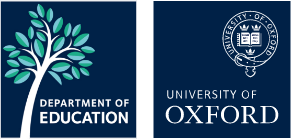Academic capitalism, privatization and five decades of misguided federal higher education funding priorities and policies in the United States
Export to calendarBio
In 1972 a great debate about the role that the US federal government would play in financing expanded higher education access ended with the adoption of a market-based voucher funding system known as Title IV or direct student aid. At the time of the adoption of this federal funding system, the US ranked number one in the world among OECD nations in the percentage of 25 to 34 year olds with college degrees.
This market-based system was not only adopted to expand underrepresented student access and choice, but also was adopted to protect the great diversity of the American higher education system which numbered 2,552 institutions in 1970. Moving forward it is important to understand that the Education Amendments of 1972 were premised on a number of significant factors that included publicly funding many private higher education institutions facing increased financial hardship, expanding more lower income student access to more institutions, and allowing a federally funded voucher system to create a more market-based and efficient higher education system. At the time, it also was anticipated that state governments would continue to remain the primary funding source for public colleges and universities in exchange for maintaining state college and university affordability.
Nearly fifty years later the US has fallen to the rank of 16th in bachelor’s degree attainment among 25 to 34 year olds and 11th in tertiary attainment levels lower than a bachelor’s degree among OECD nations. State tax effort in support of public higher education is 53% lower than it was in 1980 which is less than half the revenues provided through federal aid programs including grants, loans and tax credits. This has resulted in a series of unintended consequences including constant public college and university tuition and fee increases, the privatization of many public colleges and universities, the creation of federal and state tuition tax credits, student indebtedness of over $1.7 trillion, massive merit-based aid state aid programs, and a return of the free college public movement at state and federal levels. At the same time that many of these unintended developments have occurred, socioeconomically disadvantaged student access has not comparatively improved and federal public funding now flows to over 5,300 mostly private and for-profit postsecondary institutions.
This webinar is part of the free public seminar programme hosted by the Centre for Global Higher Education (CGHE).





